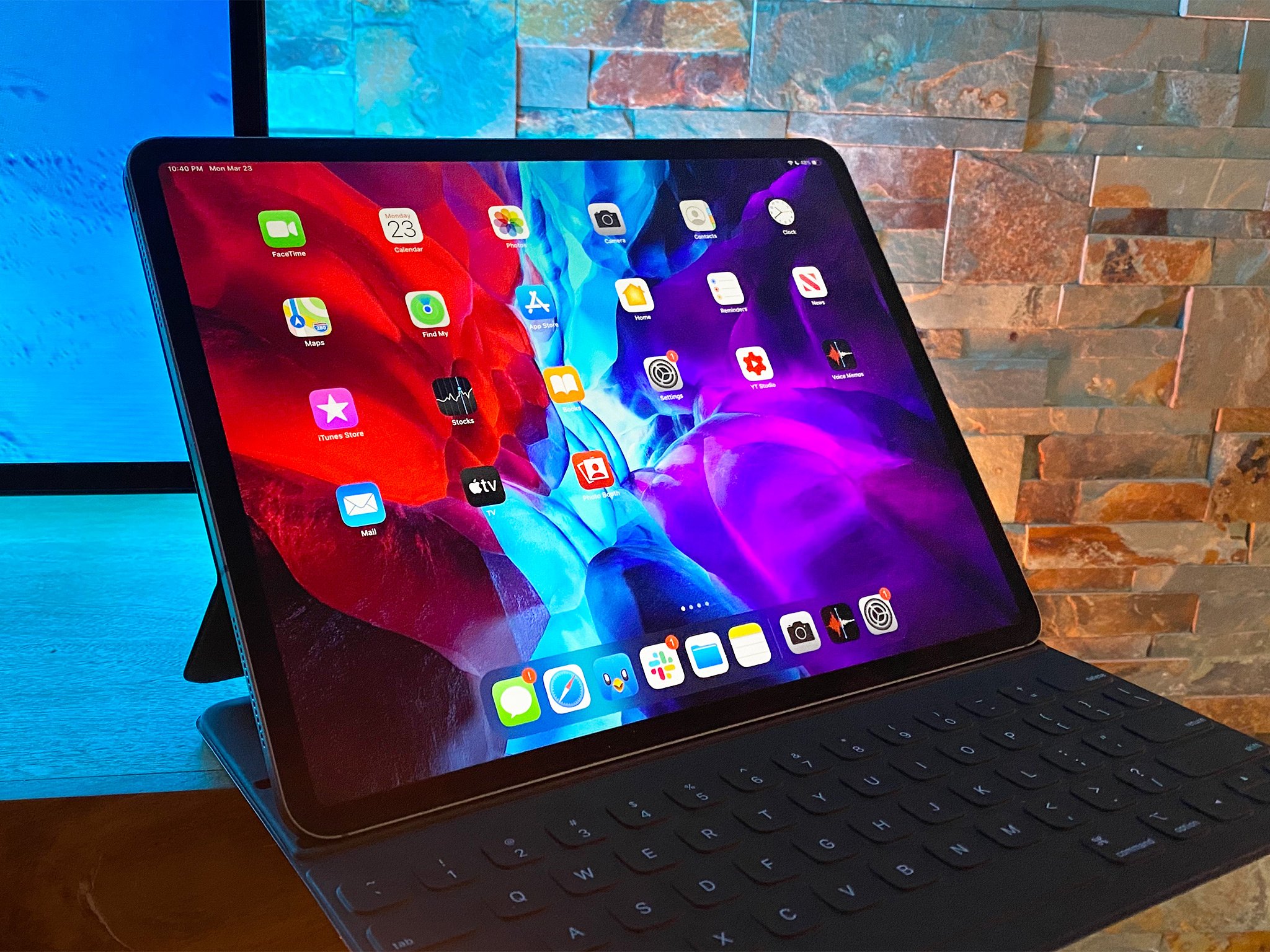Back in 2018, Apple didn't just do what they've usually done with new iPads — make them thinner, lighter, and faster. Well, yes, of course, they did, but they also did something more. They made them modern, with smaller bezels, Face ID, and a new, magnetic, capacitive Apple Pencil.
Like with the iPhone X, it was a once-in-a-decade revolution. So, now, some 18 months later, we're back to evolution — a wider processor, a second, wider camera, an intriguing new LiDAR scanner, and, coming this May, a full-on new laptop mode thanks to a new, scissor-switch and trackpad powered Magic Keyboard.
But... who is all this for, exactly?
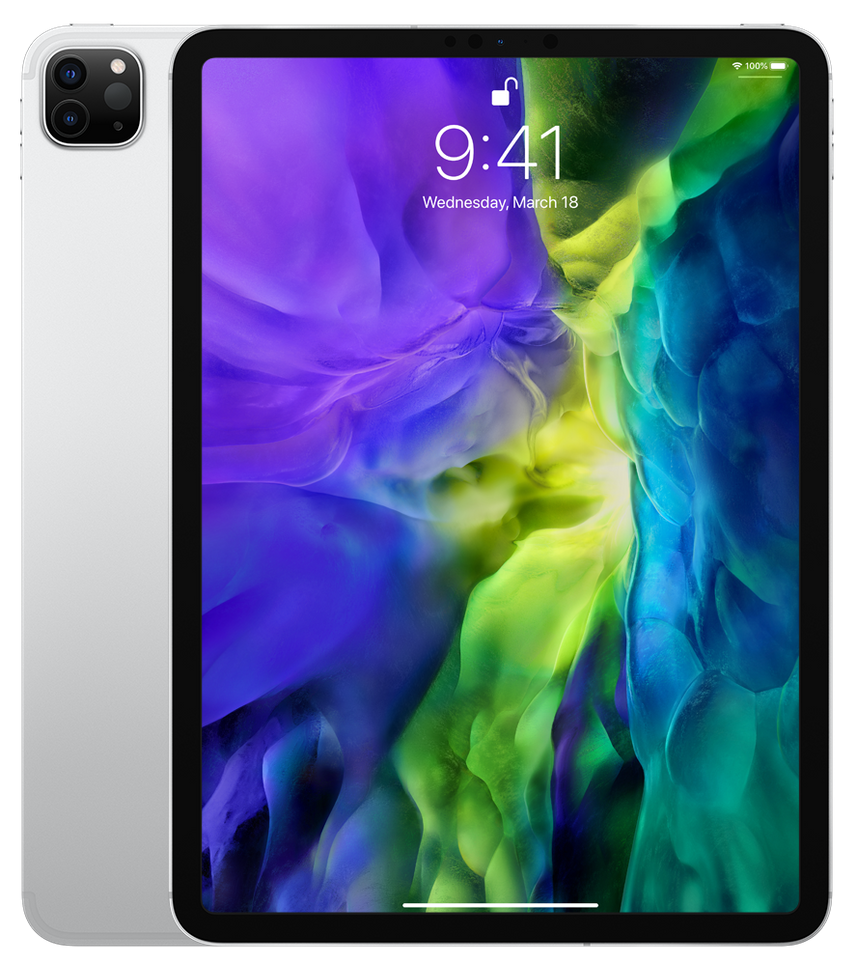
Faster, better camera, and now with lasers.
After the 2018 iPad Pro revolution, Apple is back to the more standard evolution in 2020: An additional graphics core, ultra-wide camera, LiDAR scanner, iOS 13.4 trackpad support, and a new Magic Keyboard (coming in May).
For people who want:
- Almost edge-to-edge 12.9- or 11-inch displays
- High density, wide gamut, high dynamic range, adaptive refresh and color temperature displays
- Some of the fastest processors in portables
- Mouse or trackpad support
- Wide and Ultra Wide cameras
- USB-C up to 10Gbps
- Access to all the tablet apps in the App Store
- Pro-level tablet computers
Not for people who want:
- Smaller than 10-inch or bigger than 13-inch displays
- OLED displays
- x86 processors
- Telephoto or zoom cameras
- Thunderbolt, Lightning, or USB-A ports
- Access to native Mac or Windows apps
- Cheap video and gaming tablets
iPad Pro (2020): Upgrading
Now, real talk: You're going to see a lot of noise on the net about whether these iterative improvements make the 2020 iPad Pro a justifiable upgrade from the 2018 model. That's just a weird tech industry flex that happens with every new model.
Of course, the vast majority of people don't even think about upgrading iPads, or most any gear, year over year. They think about it maybe every two or three years. Increasingly, every three to five years.
I know that. You know that. Apple certainly knows that.
So, if everyone knows that, why does Apple put out updates every 12 to 18 months? Easy — so that whenever you choose to upgrade you always get the latest, greatest version possible so that it will last you as long as possible.
Same reason a bakery makes fresh bread every day even if you only shop once a week.
So, if your iPad is getting a little long in the tooth and you're looking to take the next leap forward, here's what the 2020 iPad Pro has to offer you.
iPad Pro (2020): Design
First up, much of the 2020 iPad Pro is the same as the 2018 iPad Pro. Instead of recapitulating it all here, I'll link my original, two weeks later, and one year later reviews of the 2018 model in the comments below. But, there are a few things worth calling out.
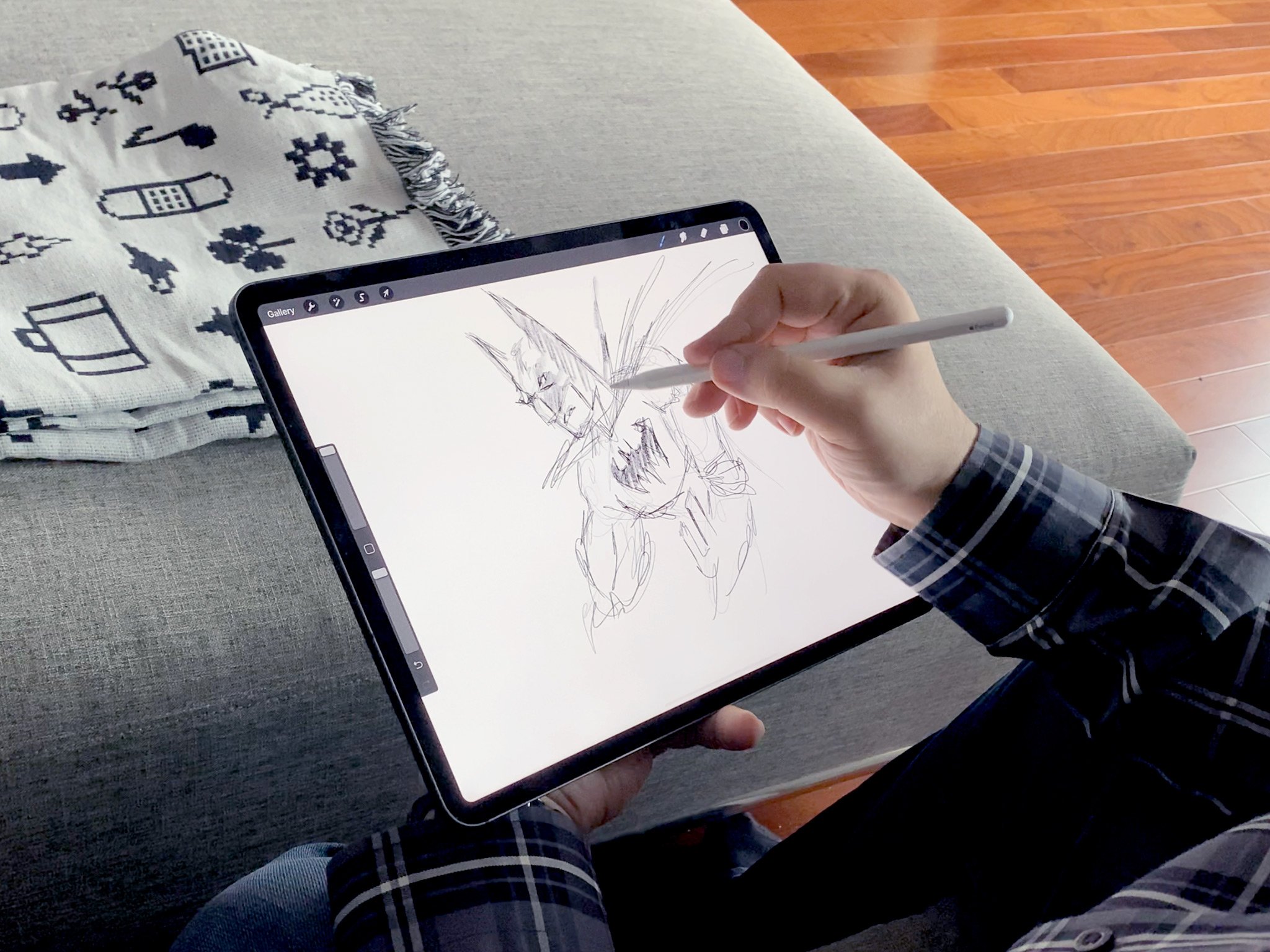
The screen is the same 120hz ProMotion, P3 wide gamut LCD panel Apple calls Liquid Retina.
I know some people are still hankering for OLED, but OLED is still constrained at iPad scale, still faces consistency challenges at these screen sizes, and if Apple prefers to wait another year or so to start deploying the potentially much better miniLED panels, well that's just fine by me.
But, yeah, the lack of deeper blacks and higher sustained and peak brightness is most definitely a bummer, especially in the age of HDR video.
The Face ID camera is the same as before as well: The old 7-megapixel version, not the new iPhone 11 12 megapixel version with, yup, slowfies. Which is a bummer. Once one Apple product goes better it's harder to see any other stay back.
And the Face ID camera is also still on the top in portrait mode, which puts it on the side in landscape mode, which is all shades of vexing for my personal, more landscape-oriented workflow.
I get that there's the capacitive charger for the new Apple Pencil along the top landscape edge now, and the keyboard slots into the bottom, but I just wish there were a way to have my preferred camera position and eat it too.
As it is, I still end up covering it with my hand way too often, and just looking all side-headed goofy in conference calls way too much with the current setup.
Otherwise, it comes in the same 11 and 12.9-inch sizes and the same silver and space gray colors. Same USB-C port at the bottom. (Not Thunderbolt 3 — the iPad Pro still doesn't surface PCIe for that.) And, yeah, I'd still love to see two USB-C ports on a Pro device. One on each side. So, like with the the MacBook Pro, I can not only plug in more than one accessory, I can plug in power from which side happens to be the most convenient.
The 2020 iPad Pro works with the same second-generation Apple Pencil as the 2018 model. The one that attaches magnetically and charges inductively right on the side of the iPad Pro. Which I all-caps love.
I did a whole review on the second-generation Apple Pencil using the Apple Pencil if you want to check that out, too.
On with the new and different.
iPad Pro (2020): Performance
I think a lot of people, myself included, were expecting Apple to do what they usually do the processor on the new iPad Pro — take the latest iPhone system-on-a-chip, add some additional GPU cores, slap an X for extra on the branding, and watch all the benchmarks melt.
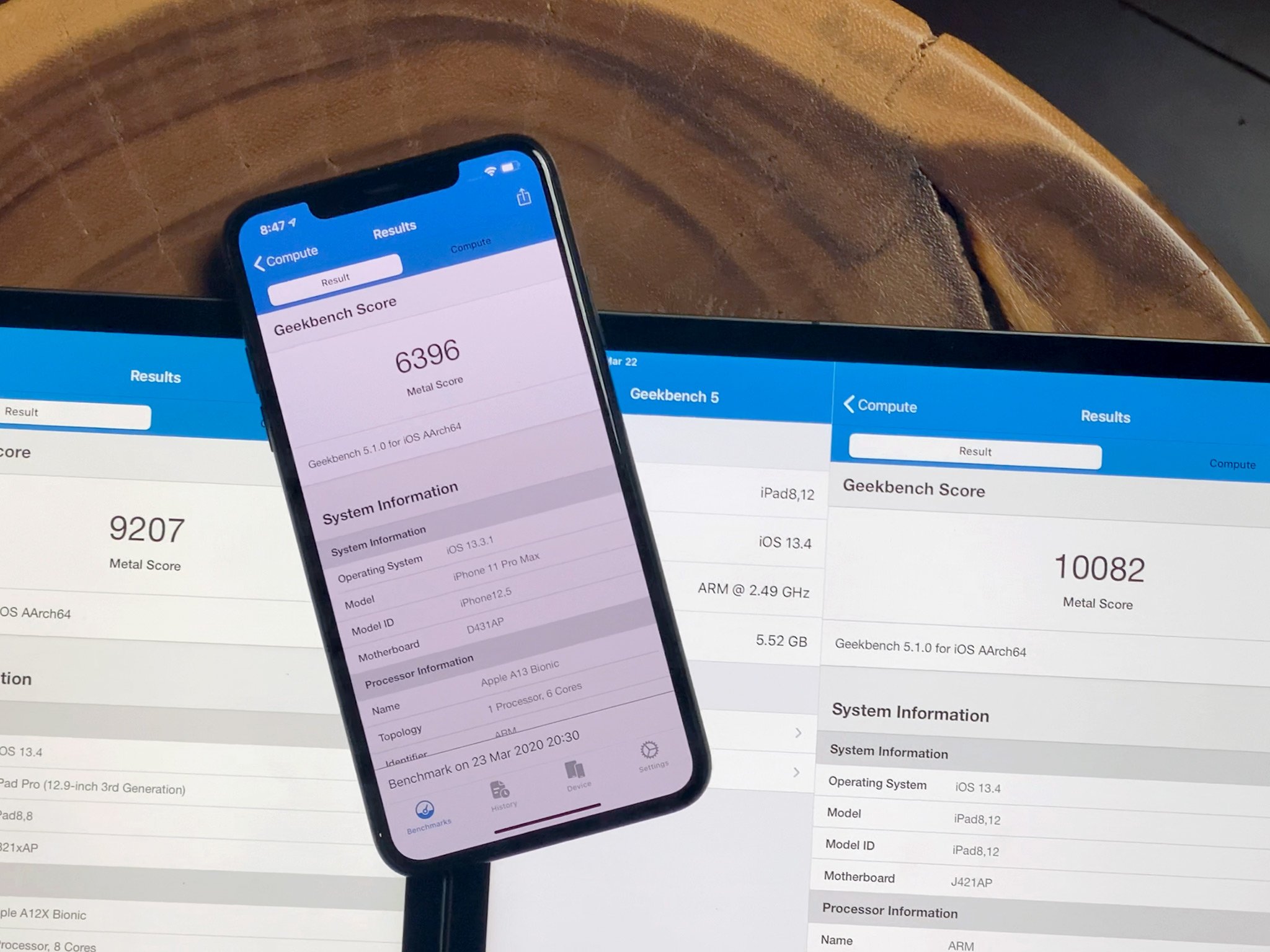
But, instead, Apple has kept the previous model's processor, added an 8th GPU core, enhanced the thermal design to allow for longer sustained performance, improved the already and always impressive performance controller to better manage what's sent to the CPU, GPU, accelerators, and Neural Engine, and incremented the X to Z.
Apple says that makes the A12Z 2.6 times faster than the A10X, which sounds like a weird chip to measure against given it's so three generations ago, but it's also exactly the processor in the current iPad Air and iPad mini, so, if you're shopping today, it makes for a useful point of comparison.
Why an A12Z and not an A13X? I'm just guessing here, but I haven't found much if anything that can really peg an A12X yet, so instead of further ramping up peak CPU performance, Apple is spending silicon budget on increasing GPU cores and sustained performance, while keeping the same-as-always 10 hours of battery life in this very thin-as-thin-can-be chassis.
It's going to be an annoying tradeoff for speeds-and-feedsters, but it's going to take a few months to see how the next crop of apps perform, especially augmented reality apps, before we'll know for sure.
And what Apple does for the next, next.
iPad Pro (2020): Cameras
Cameras on iPads are awesome and anyone who makes fun of them or people using them is… not so awesome. This is my hill and I will defend it.
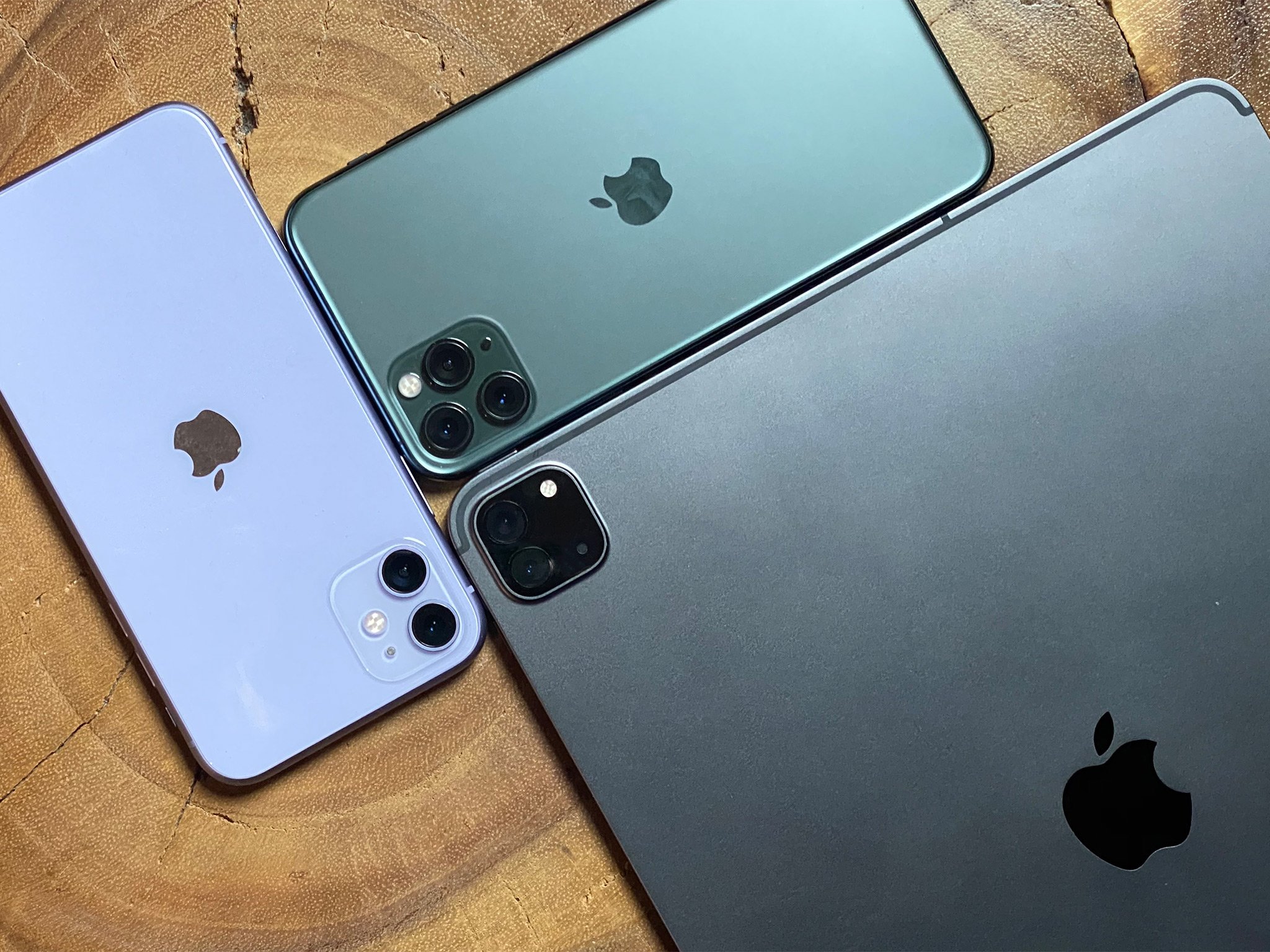
For most people, iPads can be the only camera they have with them, and therefore the best camera for when they need one, to capture everything from documents to memories.
For pros, they're a pro-sized viewfinder to capture pro-level photos and videos.
For the last many years, though, even Apple hasn't treated the iPad cameras as seriously as I wish they would — as seriously as they do those on the iPhone.
And, in that regard, the new iPad Pro is a step forward if not the full leap I was hoping for.
There are two cameras in the system now instead of just one. Similar though not quite of the same caliber as the iPhone 11, there's a 12 megapixel, f/1.8 wide-angle and a 10 megapixel, f/2.4, 125-degree ultra-wide angle.
Both can also shoot 4K video, again similar to but not quite as good as the iPhone 11, which has both better optics and a better image signal processor.
And, I mean, I get that Apple is working with different priorities, price points, and constraints here, but for an iPad Pro, I would have loved to have seen the full-on iPhone Pro camera, with all the optics, including the telephoto. Even a periscope zoom.
That way, you wouldn't have to choose between the big cameras on the iPhone or the big viewfinder on the iPad. You could mix and match for any project as needed.
There's also no portrait mode on the back like there is on the iPhone 11, which uses the ultra-wide to get extra depth data for the wide, or even the iPhone XR, which used focus pixels for baseline depth.
There's a portrait mode button but, if you tap it, horrifically, you get spun around into the front-facing, selfie portrait camera. Which is really disorienting.
It might also sound especially perplexing, given the huge advances in depth data this iPad Pro delivers — beyond even what any current iPhone can — but I'll get to in a sizzling hot minute.
Now, I realize a lot of these complaints are relative to the exceptional cameras Apple delivers on the iPhone 11, and maybe it's not fair to hold the iPad, even the iPad Pro, to the same standard.
But that's what I personally want. Pro cameras on pro devices, pro-period. Your pro mileage may vary.
Otherwise, these new cameras are still good. The best iPad cameras ever and by far. So good, the iPhone really is the only thing I'm going to compare them against.
iPad Pro (2020): LiDAR Scanner
Now, here's the part where I walk back some of what I just said. But only some: Just when you think Apple saves all the best new camera kit for the new iPhones, they go and put one of the biggest advances ever on the iPad Pro first — LiDAR.
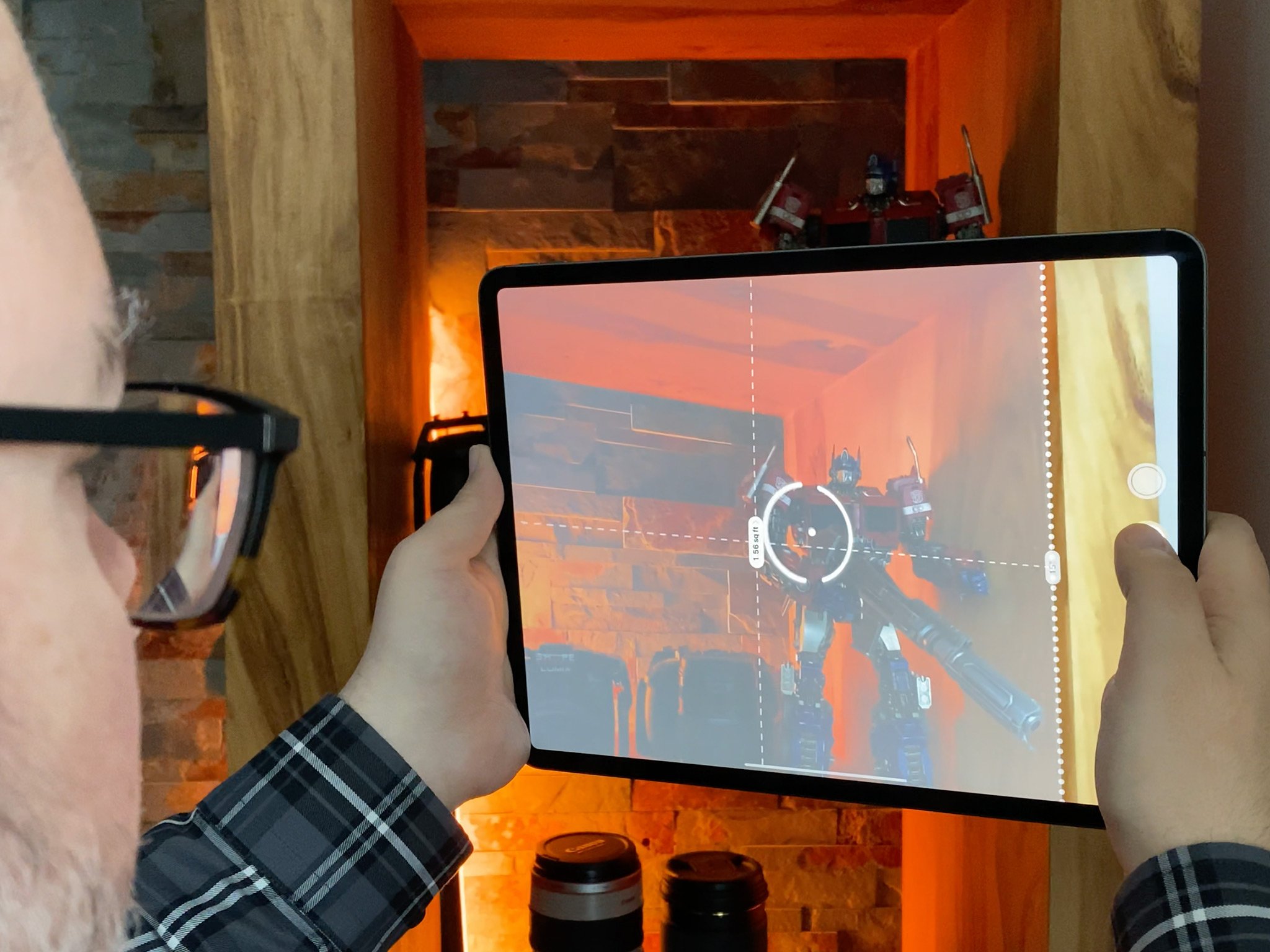
That's light detection and ranging. Basically, a time of flight sensor that can measure how long it takes light to project up to 5 meters away and back, essentially Star Trek-style scanning the environment in front of you.
Then, thanks to the A12Z and computer vision networks, it can understand that environment, that scene, quickly and fairly completely.
Developers can use it with ARKit 3.5 to get immediate 3D topological meshes of a room, to instantly place AR objects into a scene, to occlude people so those objects can look like they're moving behind them, and even to impose virtual but realistic physics into AR experiences.
Now, time of flight sensors aren't new. Google experimented with Project Tango before canceling it, you know, as Google does. A bunch of Android phones have them as well, mostly for better portrait mode.
And that's the thing; there haven't really been any compelling use cases for this stuff so far, not for the mainstream.
Even with the iPad Pro, aside from a new, much more powerful Measure app, there's not much built-in that really shows it off.
Developers are making all sorts of really cool looking apps, and everything from Ikea to Hot Lava is going to be wicked cool, but it's going to take time for the technology to really mature.
So, it's my guess, Apple is testing the waters here with the iPad Pro. Getting LiDAR into the hands of those developers. And then, when it hits the next iPhone later this year, there'll be something like a ridiculously cool AR camera app, maybe something with Maps, that shows far more mainstream applications, that starts to really boil this water.
And then that'll come to the iPad Pro with the next version of iPadOS as well, bringing not just Portrait Mode, but much, much more.
iPad Pro (2020): Radios & Mics
The new iPad Pro has the new Wi-Fi 6, making it just as modern as the iPhone 11 and more than any current Mac.
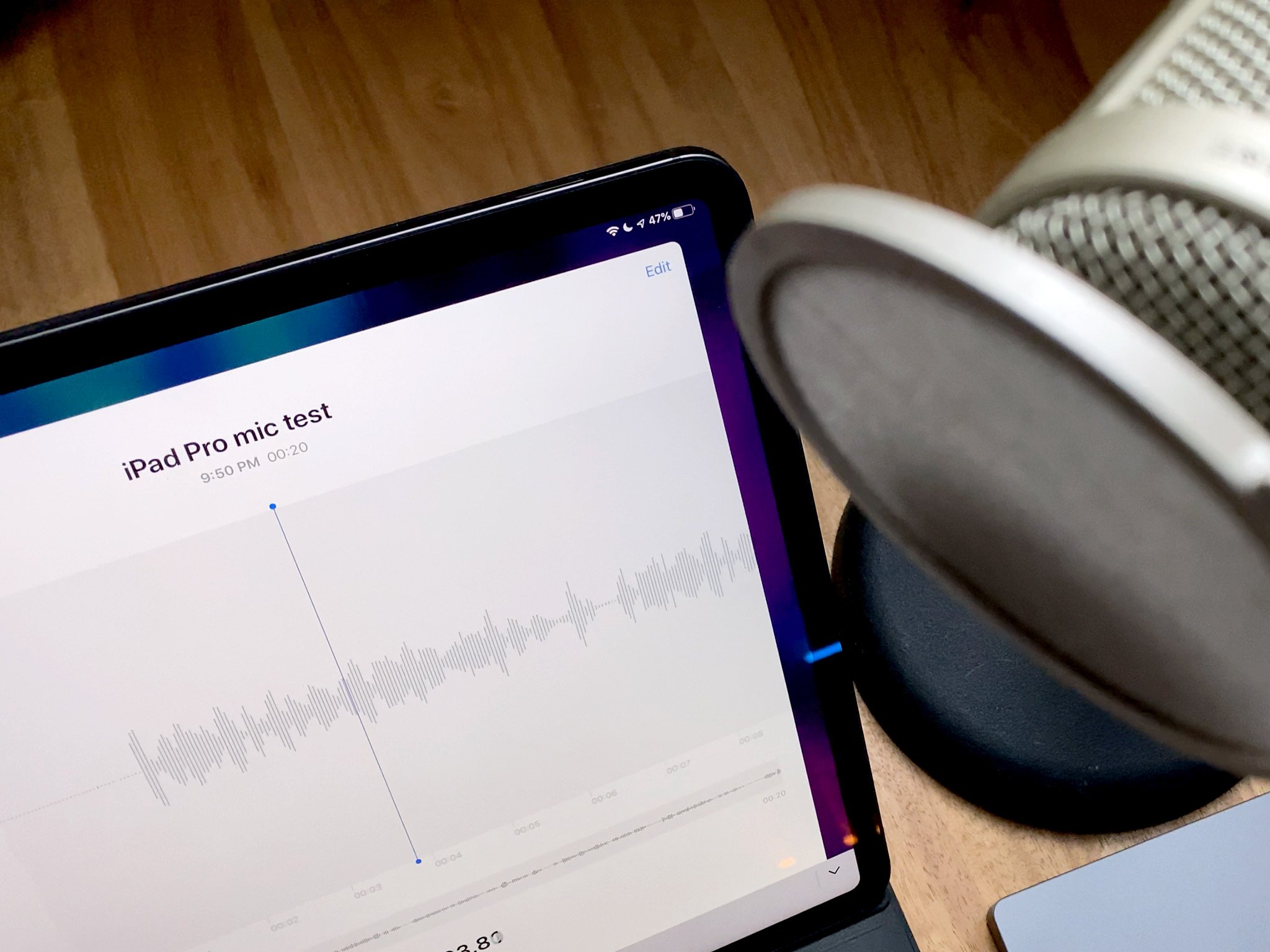
There's no 5G yet, which I'm going to continue to say doesn't matter until it does. And that isn't yet. Rumor has it Apple is going to start shipping their first 5G modems with the iPhone this fall but even then it'll probably be another year and generation before anyone really starts to benefit. Again, unless you happen to nest on top of a 5G tower.
Apple has also brought its "studio quality" mic system to the new iPad Pro which, like the new 16-inch MacBook Pro, means you can use them to record interviews, even podcasts in a pinch, with quality roughly equal to a USB mic.
iPadOS 13.4 Trackpad + Magic Keyboard
Also coming to the new iPad Pro, and any iPad capable of running iPadOS 13.4, is a new pointer system. Rather than just port over the Mac pointer, which dates back almost half a century, Apple has tried to re-envision it for the post multitouch world.
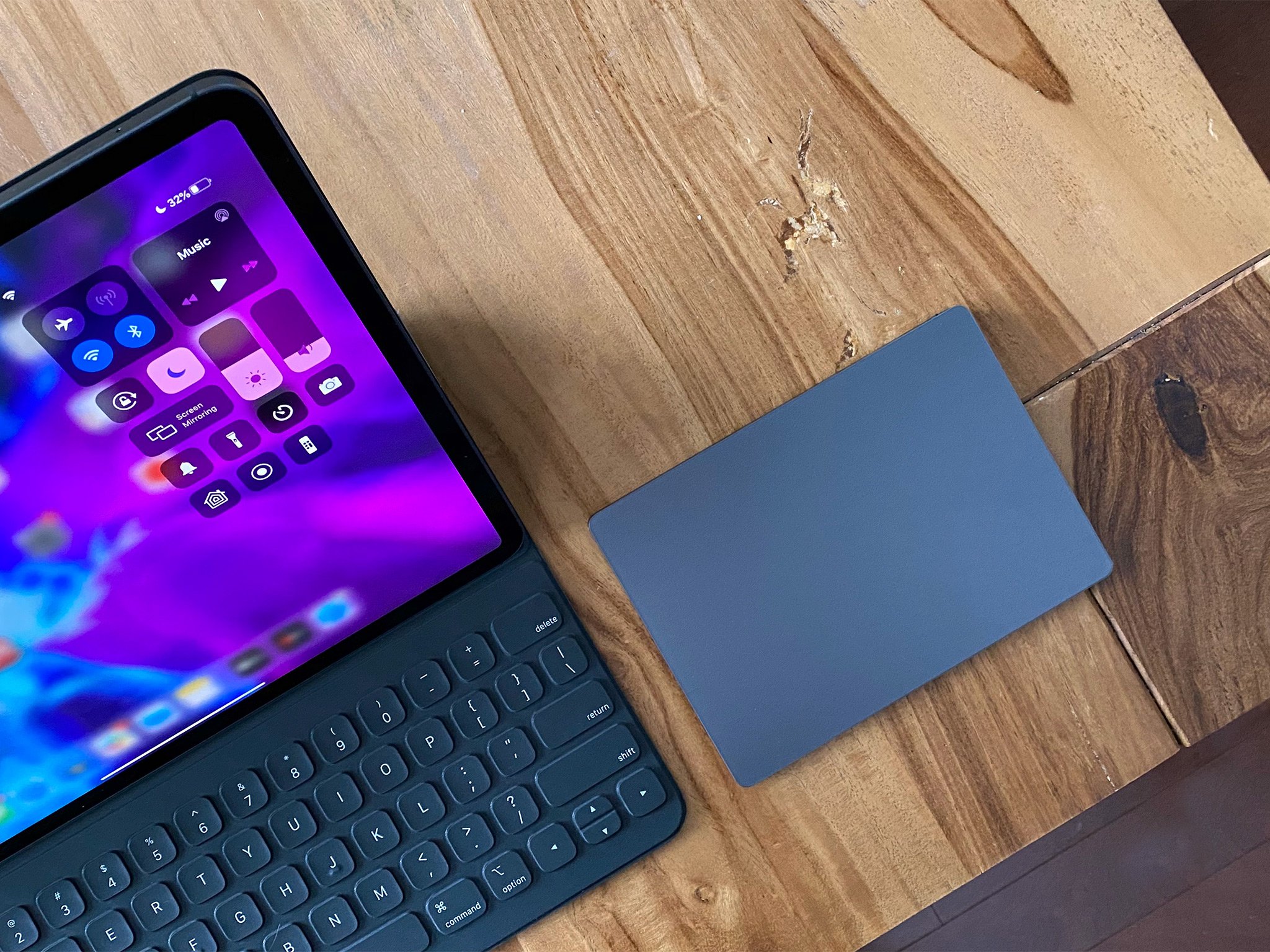
So, it flows from a circular, finger-tip-like indicator to a highlighted interface selector similar to the tvOS FocusEngine, to a more refined version of the vertical text cursor and highlighter.
You can plugin or pair it with Apple's Magic Trackpad or Magic Mouse, or most any third-party mouse, and it pretty much just works.
With Apple's Magic Trackpad and Mouse, it even supports basic gestures, including riffs on the familiar 3-finger Mac gestures to swipe between apps, go back to the Home screen, or go to mission control.
Apple's also got a Magic Keyboard for iPad coming this May, with a cantilevered, multi-angle hinge, backlit, scissor-switch keys, a USB-C port for passthrough charging, and a built-in trackpad.
It'll be prohibitively expensive for some. So, we'll have to see if it's built to last long enough that it's really worth it. But, for others, it'll be just the two-in-one they've been waiting for.
iPad Pro (2020): Conclusion
Some people are already saying that a trackpad keyboard for the iPad means Apple is admitting Microsoft was right with their Surface devices all along. Now, I'll never begrudge anyone their clicks, but, here's what I do think Microsoft got exactly right: How to make tablets into convertibles that were more appealing to traditional computer nerds. And the Magic Keyboard is Apple's realization that it can subsume that relatively niche but loud and highly lucrative market.
Steve Jobs and Apple were still absolutely right about tablets though. That's why the iPad owns that market. And it's why I'm still super excited about the $329 10.2-inch iPad that serves that much, much wider market.
I'll save the deep, philosophical debates about existential nature computers for Apple's marcomms and Dieter Bohn's Processor series because to me, they're all just tools. Like pencils vs. pens, pastels vs. paints. Pick the best one for the job at hand and switch over time as your needs change and resources allow.
That's why I also call shenanigans on people who claim the iPad shouldn't have a pencil or a keyboard or, now, trackpad support. That it's a regression instead of a progression.
If Apple was only pushing the iPad Pro up, I'd be worried about the future of accessible computing for everyone. As it is, with Apple also lowering prices and increasing capabilities of the entry-level iPad up, I think we're getting the best of both worlds.
Because, traditional computer nerd that I am, just like the Mac with arrow keys and Terminal, I love the idea of the iPad Pro finally embracing its double life.

Rene Ritchie is one of the most respected Apple analysts in the business, reaching a combined audience of over 40 million readers a month. His YouTube channel, Vector, has over 90 thousand subscribers and 14 million views and his podcasts, including Debug, have been downloaded over 20 million times. He also regularly co-hosts MacBreak Weekly for the TWiT network and co-hosted CES Live! and Talk Mobile. Based in Montreal, Rene is a former director of product marketing, web developer, and graphic designer. He's authored several books and appeared on numerous television and radio segments to discuss Apple and the technology industry. When not working, he likes to cook, grapple, and spend time with his friends and family.
